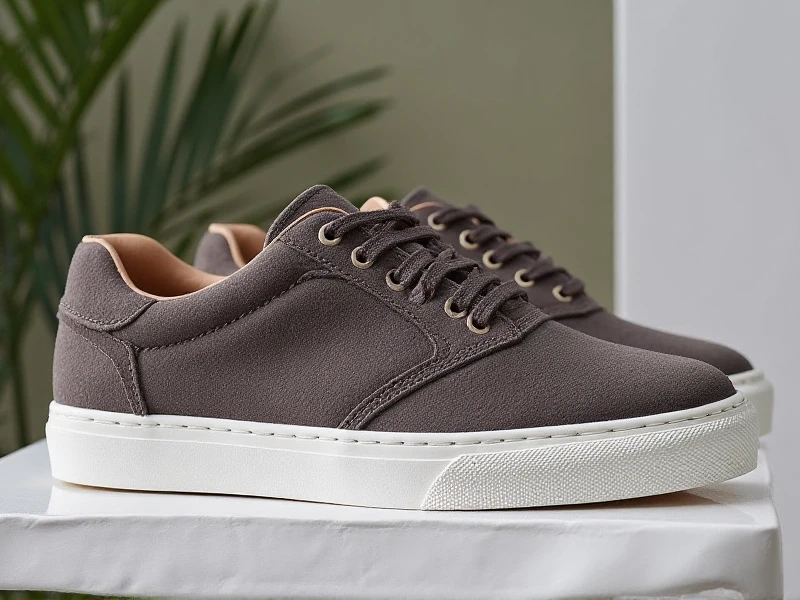The Ultimate Guide to Men's Shoes: Styles, Trends & Buying Tips
2025-06-09

Okay, here is an SEO-optimized article targeting "men's shoes," designed to read naturally and avoid obvious AI tells.
The right pair of men's shoes transcends mere function; it's a cornerstone of personal style and confidence. Whether you're navigating the boardroom, a casual weekend, or a special event, your footwear makes a statement. Understanding the vast world of men's shoes is key to building a versatile collection and ensuring you stride with purpose. This guide covers essential styles, current trends, and crucial considerations for your next purchase.
Essential Styles: Building a Foundation
No wardrobe is complete without these foundational men's shoe styles:
1. Oxfords: The epitome of formal elegance. Characterized by "closed" lacing (the eyelet tabs are stitched under the vamp), Oxblood, black, or dark brown leather Oxfords are non-negotiable for black-tie events, serious business meetings, or weddings. John Lobb exemplifies classic craftsmanship here.
2. Derbies: Similar in formality to Oxfords but with "open" lacing (the eyelet tabs are stitched on top of the vamp). Derbies offer a slightly less rigid look, making them versatile. They work well with suits or smart separates like tailored trousers and a sports coat. Tan or brown suede Derbies add a sophisticated texture.
3. Loafers: Effortless style defines the loafer. Slip-on designs range from the ultra-formal patent leather opera pump to casual penny loafers and tassel styles. They're perfect for business casual settings, summer events, or adding polish to jeans and a blazer. Venetian loafers offer minimalist appeal.
4. Boots: Incredibly diverse and practical. Men's shoes extend upwards into essential boot styles:
Chelsea Boots: Slip-on style with elastic side panels. Clean lines work smart or casual. Black leather is classic, suede adds texture, brown goes with everything. Timeless choice.
Chukka Boots: Ankle-high boots, usually suede or leather, typically with two or three eyelets. Born from desert boots, they're highly versatile for smart casual looks. Think Clark's Desert Boot lineage.
Work Boots/Walking Boots: For rugged terrain and demanding jobs. Prioritize durability, comfort, and often waterproofing (e.g., Timberland or Red Wing styles). Essential kit for outdoor enthusiasts.
5. Sneakers/Casual Shoes: The vast category for everyday wear. Includes canvas sneakers, leather low-tops, running shoes, basketball trainers, and minimalist rubber-soled shoes. Focus on comfort and personal style expression. Pair with jeans, chinos, shorts.
Current Trends in Men's Footwear
While classics endure, men's shoes see evolving trends:
Chunky Sole Everything: The "dad sneaker" aesthetic continues its influence, translating onto many styles like loafers and even some boots, adding an unexpected edge or grounding proportion. Brands like Salomon have influenced this.
Reimagined Classics: Designers are playing with traditional silhouettes. Think Oxfords in unconventional colours or with unique material mixes, Derbies in technical fabrics for outdoor use, loafers with exaggerated hardware.
Material Exploration: Beyond smooth calfskin, look for textured leathers (grains), rich suedes, canvas upgrades, recycled synthetics, and vegan options gaining significant traction alongside performance materials.
Comfort Hybrids: The line between formal and casual blurs further. Comfort-centric tech is integrated into traditionally more rigid styles, ensuring support whether you're commuting or networking.
Statement Boots: Beyond the utility Chelsea or Chukka, bolder silhouettes – taller combat-style boots, cowboy boots with modern twists, and robust hiking boots worn stylishly – are making confident statements. Think Balenciaga or niche heritage brands.
Buying Considerations: More Than Just Looks
Choosing the perfect men's shoes requires attention to detail:
Fit is Paramount: This cannot be overstated. Ill-fitting shoes cause discomfort, damage your feet, and ruin your stride. Always try shoes on in the afternoon (feet swell), wear appropriate socks, and ensure room for toes to wiggle without slipping at the heel. Know your foot shape (arch, width) – stores like Church's or even Nordstrom offer excellent sizing advice. Width options matter! Brands like Allen Edmonds are known for widths.
Purpose: Where will you wear them? Invest in quality staples needed for regular events (work, formal occasions), then build out with casual options. Hiking requires supportive boots, city commuting needs durable commuter shoe options.
Material & Construction: Quality matters for longevity. Goodyear-welted soles offer durability and ease of resoling. Real high-grade leather develops character, ages beautifully, and breathes better than cheap synthetics. Suede needs more care but offers unique texture. Research trusted brands.
Comfort: Look for cushioning, arch support (orthotic friendly if needed if flat-footed), flexible soles, and adequate room. Consider break-in periods for high-quality leather. Don't sacrifice comfort for fashion long-term. Brands like Ecco prioritize biomechanics.
Budget: You don't need hundreds of pairs. Investing in 3-4 versatile, high-quality pairs (great work shoes, essential boots, smart loafers, reliable sneakers) will serve you better than a closet full of cheap, uncomfortable shoes. Brands like Tinker Hatfield designs represent value. Prioritize where quality makes the difference.
Caring For Your Investment: Leather Care is Key
Protect your men's shoes for longevity:
Rotate: Don't wear the same pair consecutively; allow them to dry completely to prevent odor and deformation.
Use Shoe Trees: Cedar shoe trees absorb moisture, maintain shape, and reduce creases. Essential for leather shoes.
Clean & Condition: Regularly remove dirt/dust with a horsehair brush. Use a quality leather cleaner and conditioner suitable for the material (aniline vs finished) to nourish the leather and prevent cracking. Protect with waterproofing sprays – especially for boots or suede.
Resole: Quality shoes are investments. Heel taps and replacing the sole when worn can extend their life significantly.
Finding your ideal men's shoes involves balancing style, function, and comfort. By understanding the core styles, being aware of trends, and focusing on fit and quality, you can build a footwear collection that enhances your look and your stride for years to come. What's your go-to pair?
Category: